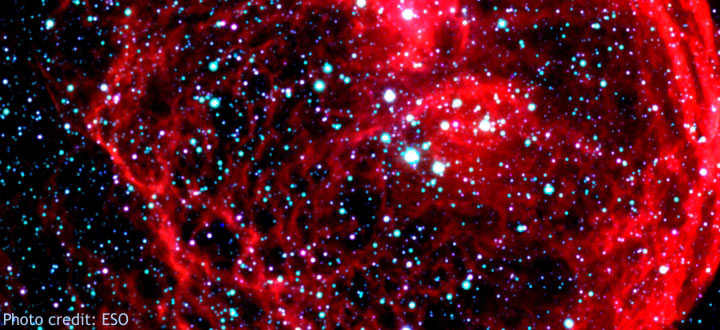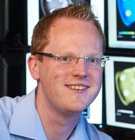The team made the discovery by chance in an experiment carried out at the Tata Institute of Fundamental Research in Mumbai, India.
An intense laser was fired at a solid target, generating a hot plasma. In the trillionth of a second after the laser reached its peak brightness, plasma flowed rapidly from areas of high density to more stagnant areas of low density, generating a series of pressure pulses in the form of a sound wave.
High frequency
“The sound generated was at such a high frequency that it would have left even bats and dolphins struggling,” said Dr John Pasley of the York Plasma Institute. “With a frequency of nearly a trillion hertz, the sound generated was not only unexpected, but was also at close to the highest frequency possible in such a material – six million times higher than that which can be heard by any mammal.”
The research team think that one of the few locations in nature where this effect could occur is at the surface of stars. But because stars are so much larger, the sound waves are likely to have a much lower frequency than those observed in the experiment.
“When they are accumulating new material, stars could generate sound in a very similar manner to what we observed in the laboratory. So the stars might be singing – but, since sound cannot propagate through the vacuum of space, no one would be able to hear them,” said Dr Pasley, who carried out the research alongside scientists from the Tata Institute and the Science and Technology Facilities Council’s Central Laser Facility in Oxfordshire.
Sound waves
The technique used to observe the sound waves in the laboratory works like a police speed camera. It allows the scientists to accurately measure how fluid is moving at the point that it is struck by the laser.
Plasma, often known as the fourth state of matter, is created when a material is raised to such a high temperature that electrons are liberated from atomic binding; this converts the material into a jumble of positively charged ions and electrons. Plasma makes up 99 per cent of matter in the visible universe.
The research was funded by the Engineering and Physical Sciences Research Council and the Tata Institute of Fundamental Research. It is published in Physical Review Letters.
The text of this article is licensed under a Creative Commons Licence. You're free to republish it, as long as you link back to this page and credit us.





